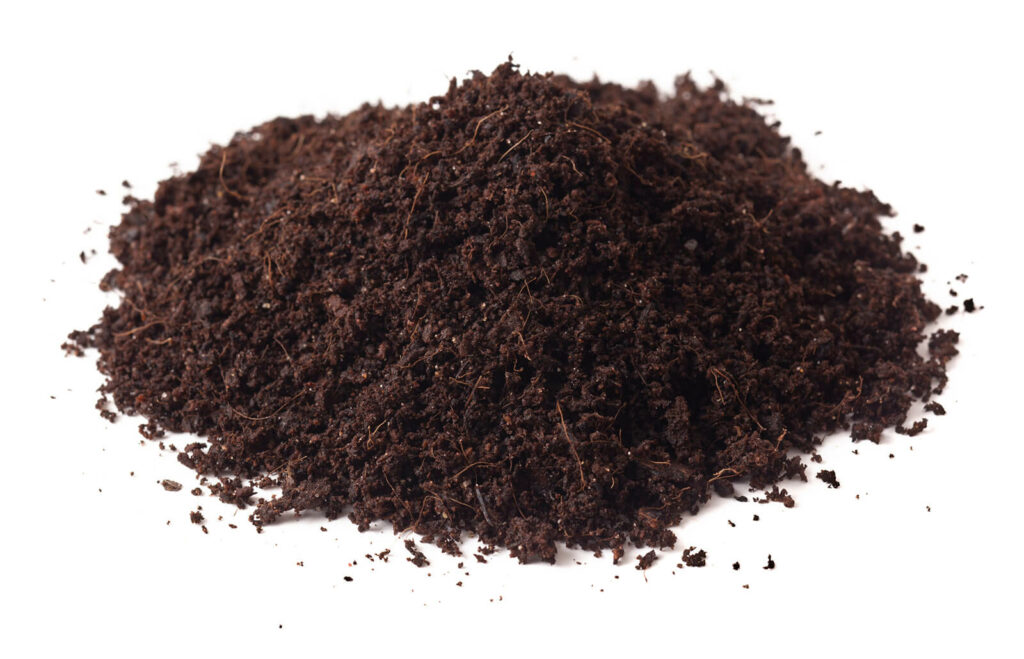
One of the keys to creating a low maintenance gardening is to use mulches to suppress the weeds and reduce the need for weeding.
In areas that are predominantly trees and shrubs you can use a weed sheeting covering my bark chips or wood chip mulches. In areas that contain perennial plants it’s best to use either Eco compost, garden compost, well rotted horse/farmyard manure making sure the material does not contain weeds initially or wood or bark chips.
These mulches will be incorporated into the soil over a period of time by the soil bacteria and by earthworms helping to improve the texture and water holding capacities of the soil.
One important point to remember with all mulches is that as they breakdown they remove nutrients from the soil as the bacteria uses the nutrients to help to break down the mulches so it’s important when you apply a mulch to add some fertiliser to the soil first we normally recommend a handful of Growmore fertiliser per square metre.
Mulching is one of the most effective ways to create a low-maintenance garden by suppressing weeds and reducing the need for regular weeding. However, with recent changes in UK legislation banning the use of peat in gardening products, it’s important to adapt your mulching practices. Spent mushroom compost, which contains significant amounts of peat, will no longer be a viable option. Instead, gardeners are encouraged to use eco-friendly alternatives such as eco compost, garden compost, wood chips, or bark.
Updated Mulching Techniques
1. Cardboard Layering
A new approach that has gained popularity among the GardenAdvice team over the past few years involves using old cardboard as a base layer beneath the mulch to suppress annual weeds effectively. Here’s how to implement this technique:
- Lay Cardboard: Use cardboard to cover the soil around your plants. Cardboard is easy to rip and lay in sections to fit the shape of your garden beds. Sources such as supermarkets, chemists, or delivery boxes (e.g., Amazon) often provide free cardboard.
- Cover with Mulch: Once the cardboard is laid, cover it with eco compost, garden compost, wood chips, or bark. This layer weighs the cardboard down, improves aesthetics, and helps the cardboard break down over time, enriching the soil as it decomposes.
2. Selecting the Right Mulch
- Eco Compost or Garden Compost: Ideal for areas with perennial plants, these mulches improve soil texture and water retention as they decompose.
- Wood Chips or Bark: Suitable for areas predominantly planted with trees and shrubs, these mulches provide long-lasting coverage and enhance the garden’s visual appeal.
3. Nutrient Considerations
As organic mulches decompose, soil bacteria consume nutrients to aid in the breakdown process. To compensate for this nutrient depletion, it’s essential to fertilize the soil before applying mulch. A general recommendation is to apply a handful of Growmore fertilizer per square meter before mulching.
4. Benefits of Mulching
- Weed Suppression: Mulches, especially when combined with a cardboard layer, significantly reduce the growth of annual weeds.
- Soil Enrichment: Decomposing mulch enhances soil structure, texture, and water-holding capacity.
- Low Maintenance: Reduces the need for frequent weeding and improves overall garden health.
Key Considerations
- Acid-Loving Plants: For plants that prefer acidic soil conditions, such as rhododendrons and blueberries, avoid materials like spent mushroom compost, which contain high levels of lime. Instead, use well-rotted horse manure or farmyard manure, which are slightly acidic.
- Ongoing Maintenance: Mulches need to be replenished annually to maintain their effectiveness. Persistent weeds that grow through the mulch should be removed by hand or spot-treated with an appropriate herbicide.
By adopting these eco-friendly mulching practices, you can create a sustainable, low-maintenance garden that complies with the latest environmental regulations and enhances the health of your plants and soil.




















